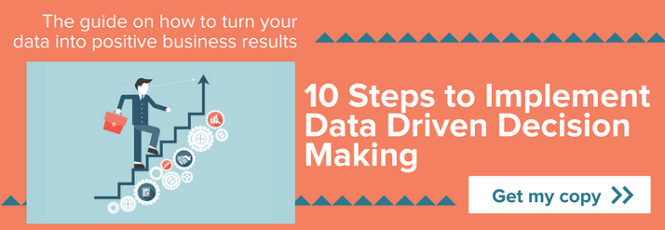The 6 Steps to Creating Successful, Data-Based Strategies

If you’ve been paying attention to the big data revolution the last few years, you are probably eager to launch your own data-based strategies. In the short time since “big data” has come to the forefront, the benefits of leveraging data to make business decisions have been well-documented.
According to McKinsey, retailers that leverage data analytics at scale could see their operating margins increase by as much as 60%. That kind of result isn’t limited to retail either, businesses in every industry can benefit from increased data usage. MSPs can use data to monitor response times, examine behaviors, or analyze trends. Data is the most valuable tool that businesses have to aid the decision-making process. Unfortunately, too many underestimate the impact that data could have on their business.
As you explore ways to improve data usage and incorporate it into your decision-making, it is important to outline your processes. The inclusion of data in big business decisions will require changes on the part of executives and management. Having an outlined process will streamline changes and help companies make smart decisions.
Creating a data-based strategy begins with the definition of a problem. What is it that you would like to see changed within your company? What would the goals of that change be? Simply having a large amount of data on hand doesn’t provide any insight without having it attached to a tangible business goal.
Download our free guide on 10 Steps to Implement Data-Driven Decision Making.
1) Analyze your data
Once you have identified a problem, you must analyze your data and determine what metrics are most relevant to the issue. For instance, if slow responses to network outages are causing friction with clients, analyzing your mean time to repair would be a good place to start. Make a list of all metrics that apply specifically to the issue that you want to resolve.
When choosing the metrics to use for making changes, remember that not all data is valuable. The method used to capture the data determines its usefulness. According to a TDWI report, data quality problems cost U.S. businesses more than $600 million every year. Making large-scale business decisions based on bad data could have catastrophic consequences for any business.
2) Stay focused on areas of importance
Businesses collect a lot of data. The business analytics firm McKinsey projects a 40% growth in global data per year. When you have a wealth of data available and are excited about injecting data-based strategies into your business, it can be easy to get caught up in areas that are unimportant to big picture goals. Focus on the core of your business. What are the biggest challenges your company is facing? Identify the biggest areas for improvement within your business and focus on those. Data-based decision making is beneficial, but can incidentally lead some down paths that waste time and resources.
3) Evaluate your results
Once you’ve identified a problem and metrics to use in evaluating the effectiveness of your changes, you must decide on a change and see how the data moves after the change is implemented. Business owners must allow the change to take hold for long enough to ensure that the data changes that you see have statistical significance. A few days worth of data is not enough to draw conclusions from. Give your employees time to become used to the changes as well. As their familiarity with the new process grows, your data may change over time.
4) Identify what’s working and what needs improvement
When you make a change to your processes, you do so with an idea of the result that you would like to see. However, once a change has been rolled out, there may be unforeseen issues that may not reveal themselves immediately. Evaluate each change in full. Did the data move in the direction that you had hoped? By figuring out what worked when you made the change, you can begin to iterate with new changes and refine your processes.
5) Iterate and implement changes
Once you have identified what is working and what isn’t working with your changes, you can then begin the process of iteration. There may always be small issues, but with new small-scale changes, you can reduce their impact. With each new iteration, keep what works and try to find new data-backed solutions for the processes that are having issues. Every iteration gets your business a step closer to a nuanced, data-backed solution to your larger business problem.
6) Work closely with your team
Remember that data is only a tool that you have at your disposal. Another tool that you should not take for granted is the feedback from your teams. A data-backed strategy that moves your metrics in the right direction is great but can cause internal issues if the changes are misunderstood. Try to ensure that the process is as transparent as possible. Show them why you are making the change, including the data that helped you to make the decision. By involving your employees in the process, you will receive valuable feedback that helps you to make smart business decisions.
Interested in learning more about data-driven decision making? We’ve recently released a new whitepaper that can help any business to inject data-driven decision making into their processes and grow their business.
Click here to download 10 Steps to Implement Data-Driven Decision Making.
Free MSA Template
Whether you’re planning your first managed services agreement, or you’re ready to overhaul your existing version, we've got you covered!


